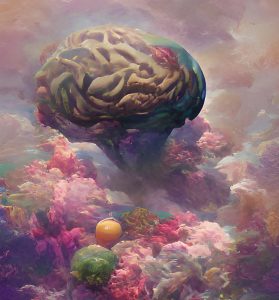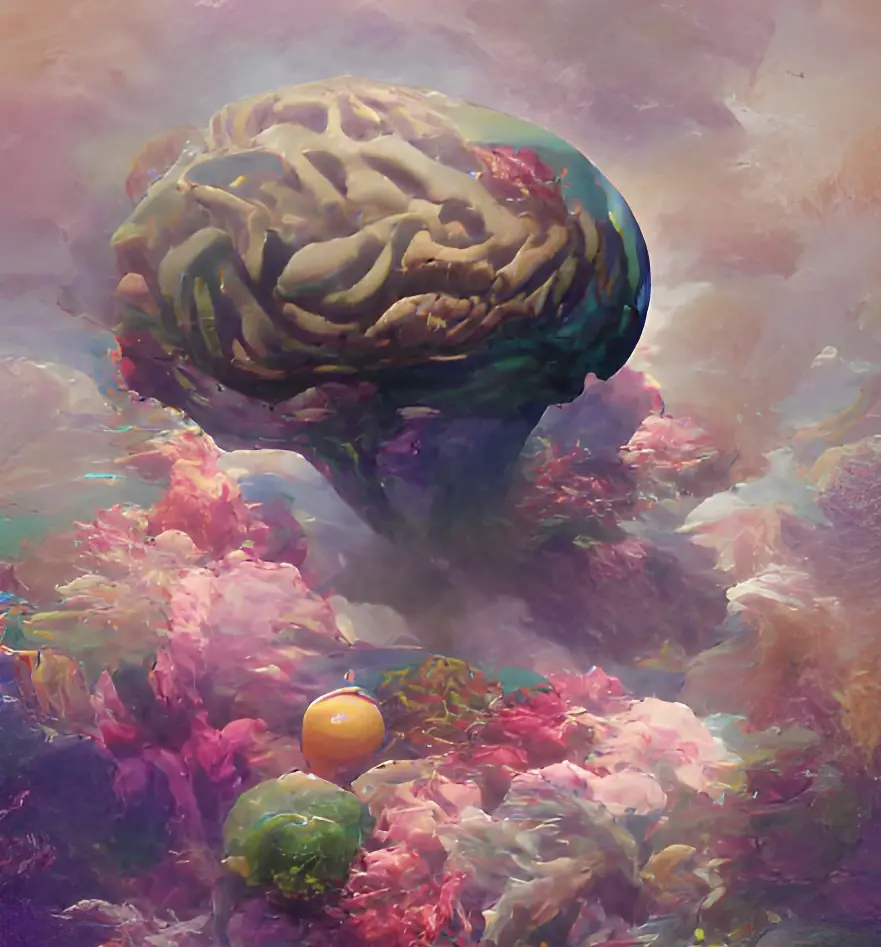Excessive thinking happens to people as their mind is constantly trying to identify and solve problems. Overthinking can also be due to high levels of anxiety causing worry by imagining terrible future scenarios playing out.
The inability to concentrate on the current moment but instead becoming lost in memories of the past or in your imagination about a negative future are signs of excessive thinking.
The ability to focus your attention on the present moment and the task at hand is the primary way to stop excessive thinking with present moment focus and awareness.
How can I stop excessive thinking?
Cognitive fusion happens when people lose their perspective and start believing their inner narrative and equate thoughts with reality. Cognitive fusion is when you lose the space between your conscious awareness of your thoughts and your thinking becomes your truth. This can be very bad for your mental health when you have negative self-talk.
When people are in a mental state of cognitive fusion, their thoughts have a tendency to become their reality. This begins a cycle of believing your thoughts and giving rise to more thoughts in one mental direction. Thoughts must be seen for what they are, just thoughts, not truth, or reality, but inner narratives rising in our mind to be observed not merged with what we believe.
A mindfulness-based perspective can create cognitive defusion and help separate or conscious awareness from our thoughts. Mindfulness of our thinking allows us to see that thoughts are not facts they are just thoughts alone. Most thoughts are not even the product of our thinking, they just arise on their own from many sources. Thoughts can come from our unconscious belief system, how we feel at the moment, or thoughts could rise from emotions. Most thoughts originate from a source besides thinking. Just because you have a thought arise in your mind about something doesn’t necessarily mean it’s a fact.
You can stop excessive thinking by bringing your conscious awareness into the present moment and observing your thoughts like a spectator. Whatever you can bring mindfulness to whether it’s a thought or emotion you can dissolve into your awareness. Thoughts and emotions lose their power when brought into the perspective of the current moment. There is little thinking, stress, and compulsiveness in the present moment due to the lack of guilt about the past or worry about the future.
When we allow thoughts to become our reality and capture our perspective is when they become harmful in repetitive cycles. We can get trapped in loops of thinking without awareness to see the thoughts for what they truly are.
You can stop excessive thinking when you can observe its repetitive nature and become aware that it isn’t real. Replace you excessive thinking with watching the thoughts as they arise and questioning their validity until they lose their momentum.
Why do I think so much?
The mind is a thinking machine constantly given rise to words and inner narratives with no prompting. People rarely even need to sit down and take the time to think, thoughts will automatically arise of their own making. Realize when you feel bombarded with excessive thoughts that there isn’t even a thinker behind them, what you are experiencing is thoughts mostly arising from physiological reactions, unconscious sources, and unresolved emotions.
You think so much because your unconscious mind is trying to identify potential problems in the future, resolve past problems by understanding them, and fill the vacuum in your mind when no activity is taking place. This is why people enjoy hobbies, games, and sports because when they get in the zone of activity their endless thought stream can change its focus to getting a result. People also like losing their self to entertainment in a book or movie to disrupt their usual stream of thought into someone else’s narrative.
You think so much because you are not occupying your time, concentration, and mind with a higher purpose. You can break the stream of excessive thinking by getting busy focusing on your goals. If you use your present moment awareness to work on the activities to move you toward your goals you will disrupt your excessive thinking by giving it something new to target.
Why can’t I stop thinking?
You can’t stop excessive thinking when you are unable to direct your focus on the present moment or on a current activity. It requires discipline in attention and awareness to stop thinking endlessly and change and bring your stream of consciousness under your own proactive control.
Excessive thinking is done outside your control and happens on its own. To stop allowing the random thoughts to both arise and take over it takes the will of effort to observe the thoughts but not get lost to them People can lose their perspective and think they are their own thoughts when they can’t separate their will from their random thoughts.
You are not your thoughts, you are the thinking that gives rise to your real thoughts through the act of thinking itself. If you didn’t use thinking to arrive at a thought it is not your own. It’s just a thought that arose from an internal source not from your conscious mind. Being able to identify your own thoughts from the random ones from questionable sources will help you stop all the excessive thinking.
You are not your thoughts, you are the thinker. When you can get this right perspective in place then thoughts become something you either create or observe and less just things you trust. Find space between your true self and your thoughts as they are not the same thing. Not all thoughts are true and you create your own inner reality through your will and intellect.
You break the habit of excessive thinking through new habits of mindfulness, internal observation, focus, and perspective on who you really are. If you are mentally living in the present moment of now it’s much easier to spot random thoughts for what they are not take them seriously.
A systematic approach to life can help you focus on what needs to be done each day in your life and career with little space for thoughts to arise outside your plans.

Image created by Holly Burns
